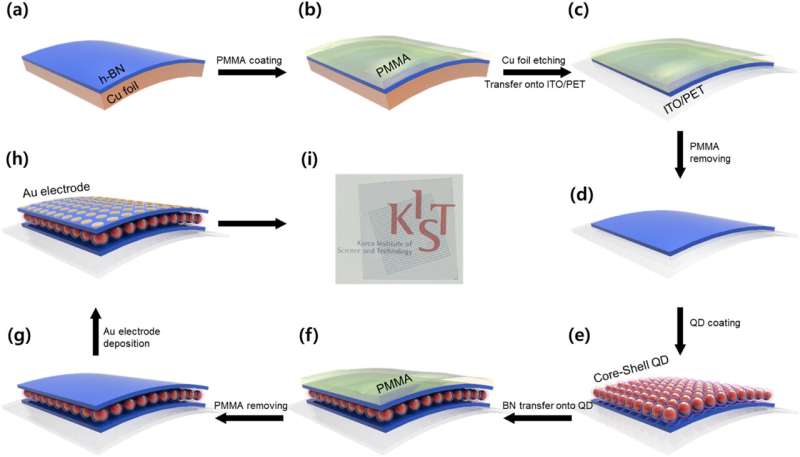Development of a transparent and flexible ultra-thin memory device

A two-dimensional (2D) nanomaterial-based flexible memory device is a critical element in the next-generation wearable market because it plays a crucial role in data storage, processing, and communication. An ultra-thin memory device materialized with a 2D nanomaterial of several nanometers (nm) can significantly increase the memory density, leading to the development of a flexible resistance-variable memory with the implementation of a 2D nanomaterial. However, memories using conventional 2D nanomaterials have limitations owing to the weak carrier trapping characteristics of the nanomaterials.
At the Institute of Advanced Composite Materials, Korea Institute of Science and Technology (KIST, President Yoon, Seok-Jin), a research team led by Dr. Dong-Ick Son announced the development of a transparent and flexible memory device based on a heterogeneous low-dimensional ultra-thin nanostructure. To this end, monolayered zero-dimensional (0D) quantum dots were formed and sandwiched between two insulating 2D hexagonal boron nitride (h-BN) ultra-thin nanomaterial structures.
The research team materialized a device that could become a next-generation memory candidate by introducing 0D quantum dots with excellent quantum limiting properties into the active layer, controlling carriers in 2D nanomaterial. Based on this, 0D quantum dots were shaped in a vertically stacked composite structure that was sandwiched between 2D hexagonal h-BN nanomaterials to produce a transparent and flexible device. Therefore, the developed device maintains above 80% transparency and memory function even when bent.
Dr. Dong-Ick Son stated, "Instead of conductive graphene, by presenting a quantum dot stacking control technology on insulating hexagonal h-BN, we have established the foundation for ultra-thin nanocomposite structure research, and significantly revealed the fabrication and driving principle of next-generation memory devices." He then added, "We plan to systematize the stack control technology for the composition of heterogeneous low-dimensional nanomaterials in the future and expand the scope of its application."
The research was published in Composites Part B: Engineering.
More information: Jaeho Shim et al, Memory effect of vertically stacked hBN/QDs/hBN structures based on quantum-dot monolayers sandwiched between hexagonal boron nitride layer, Composites Part B: Engineering (2021). DOI: 10.1016/j.compositesb.2021.109307
Provided by National Research Council of Science & Technology





















